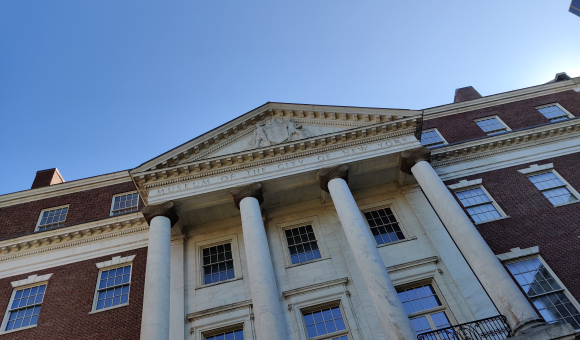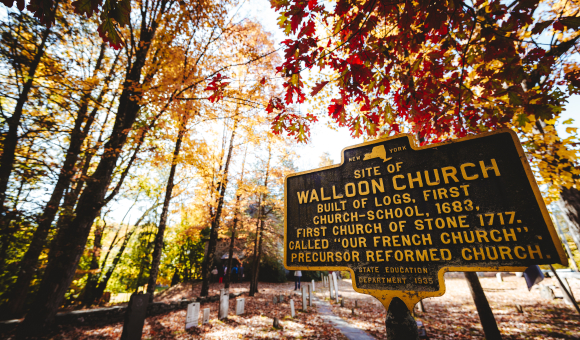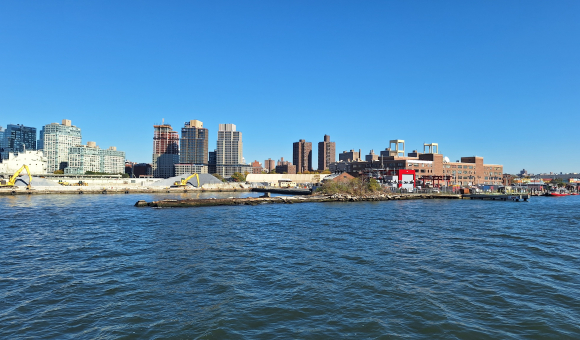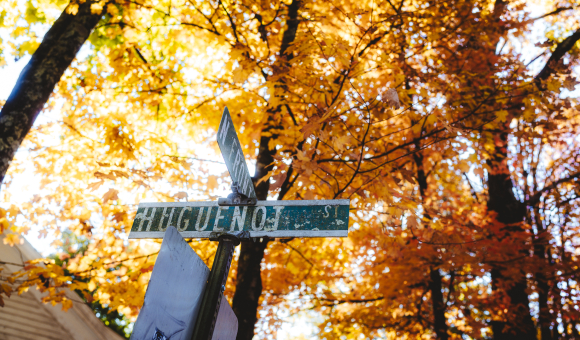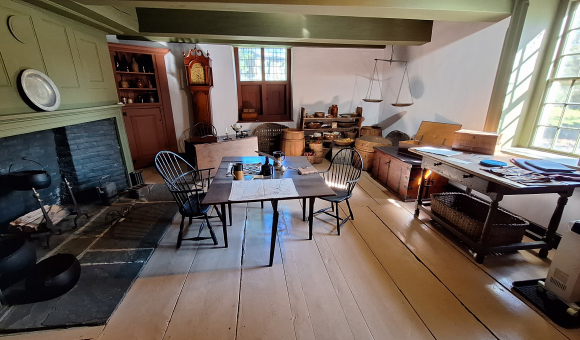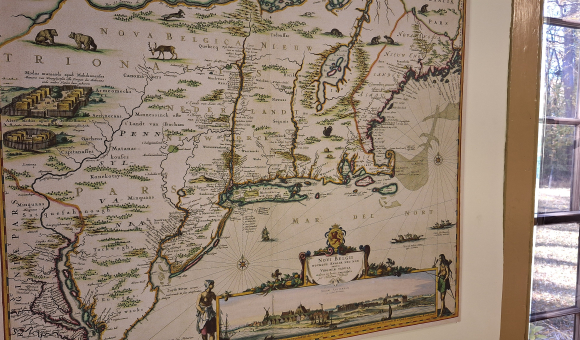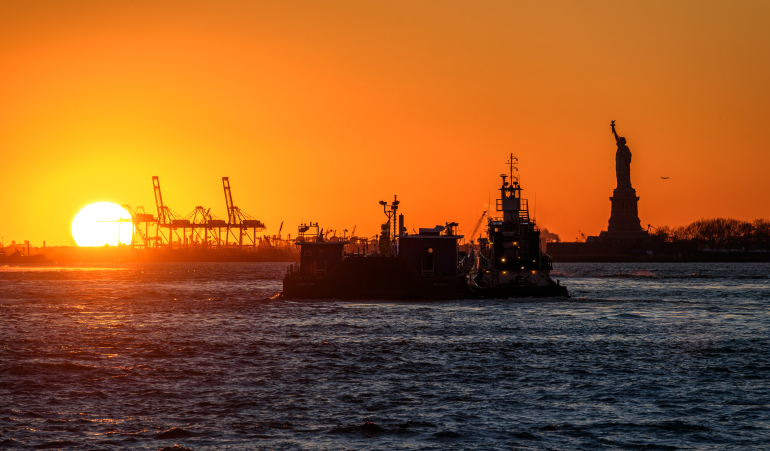
Four hundred years ago, Walloon families set sail for the New World, laying the foundations of a unique relationship with the future city of New York. From the famous purchase of Manhattan by Pierre Minuit to today’s cultural and economic influence, this transatlantic story illustrates a discreet yet profound heritage, nurtured by values of freedom, innovation, and exchange.
At the origins of a transatlantic bond
In 1624, a little-known but significant page of Wallonia’s history was written on the shores of the New World. That year, about thirty Walloon families boarded the ship Nieu Nederlandt bound for America. They were sent by the Dutch West India Company to establish a colony in what was then called New Netherland. Often Protestants, these settlers were fleeing the religious tensions that gripped Europe and sought to build a new life in a land still largely unexplored by Europeans.
Among the Walloons who shaped the colony’s history, Pierre Minuit (or Minnewit), born in Tournai, played a central role. In 1626, while serving as governor of New Netherland (1626–1631), he purchased the island of Manhattan from the Lenape people in exchange for goods (glass beads, trinkets, etc.) valued at about 60 florins. This symbolic act—though controversial in its modern interpretation as the beginning of a long process of dispossessing Native Americans—marked the start of the colony’s expansion and the establishment of “New Amsterdam.”
The ‘$24 myth’: New York’s first real estate deal
Pierre Minuit’s purchase of Manhattan is often hailed as one of the “best real estate deals in history.” For the equivalent of 60 florins—often translated into a modern value of about $24—the settlers acquired a strategically located island at the confluence of the Hudson River and the Atlantic Ocean. While the concept of land ownership had a very different meaning for the Lenape, the exchange formalized, in European eyes, a lasting settlement. Four centuries later, Manhattan has become one of the world’s most dynamic and influential economic centers, home to Wall Street, the United Nations headquarters, countless companies, cultural institutions, and innovators. From a simple trading post to a global megacity, Manhattan epitomizes the spectacular transformation of the New World—sparked, in part, by what one might call a visionary gamble.
At the southern tip of Manhattan, in Battery Park, a monument honors Pierre Minuit. It marks the site where he is believed to have concluded the island’s purchase and today serves as a place of remembrance for descendants and admirers of this founding chapter in New York’s history.
Back in the 17th century, Walloon settlers established themselves notably on Manhattan Island, where they helped found the New Amsterdam trading post. They brought their skills, language, beliefs, and helped shape the first social and economic structures of what would become America’s largest metropolis. Their legacy survives today in certain place names—such as Wallabout Bay in Brooklyn, from Waal-bogt (“the Walloon curve”)—and even in the coat of arms of New York City, which bears the date 1625, a direct reference to this first wave of colonization. Chosen for its naturally deep waters, New York’s harbor and surrounding streets marked the arrival point for the first Walloons in the bay that still bears its name.
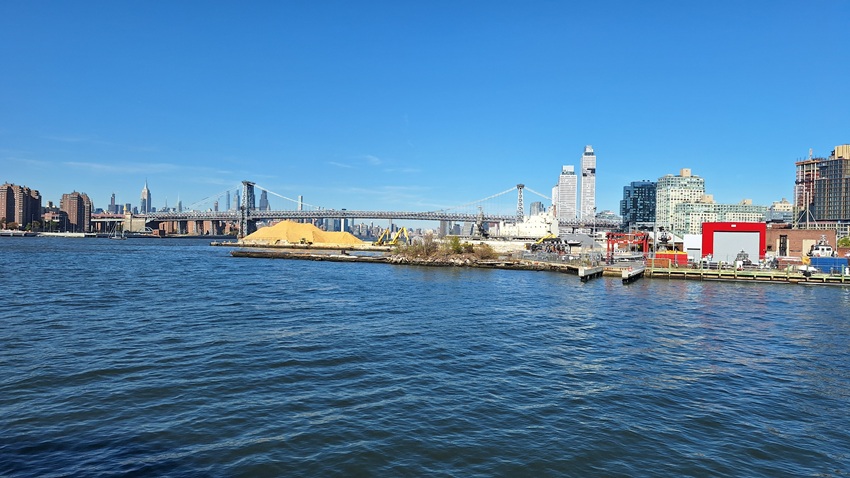
The only surviving historical record of this moment is a single sheet of paper kept in the Dutch National Archives, addressed to the Dutch Parliament (then located in Haarlemerstraat), reporting the return of the ship from New Amsterdam in 1626.
« The story of Minuit’s purchase of Manhattan has become legendary in American memory, perhaps because the price sounds like such a fleecing. What better origin story for the island that has since become the capital of capitalism ? », Museum of the city of New York
After five years of relatively peaceful governance and expansion of trade and European settlement (up to 300 colonists), Pierre Minuit was removed from his post in 1631. He remained in the New World, entering the service of the Kingdom of Sweden to establish the colony of New Sweden on the Delaware River (near present-day Philadelphia).
An active, but long-overlooked memory
For a long time, the contribution of Walloons to New York’s founding remained little known, often overshadowed by dominant narratives focused on English or Dutch settlers. Only gradually, especially in the 20th century, did this memory resurface, thanks to Belgian and American historians interested in the diversity of the peoples who founded North America’s earliest colonies.
Occasional commemorations, such as the 1924 tricentennial, rekindled interest in Walloon heritage. Local initiatives emerged to keep alive the memory of the Walloon pioneers: commemorative plaques, published works, renewed contacts between the two regions. Today, institutions like the Museum of the City of New York or American archives (notably in New Paltz, NY) preserve precious traces of these first Walloons in America. In Wallonia, the Musée de la Vie wallonne and various local history societies also highlight this lesser-known chapter of transatlantic history.
2024: Celebrating 400 years of presence and partnership
The 400th anniversary of this migration offers a unique opportunity to reaffirm and reinvent the ties between Wallonia and the New York region. In 2024, numerous events are taking place on both sides of the Atlantic: historical conferences, exhibitions, city partnerships, school initiatives, and cultural celebrations.
Cooperation with an open window to the future
While historical roots run deep, future prospects are equally promising. The New York region remains one of the world’s foremost economic, academic, and technological hubs. For Wallonia, it is a strategic partner for developing projects in promising sectors such as clean technologies (Cleantech), digital health, biotechnology, creative industries, and aerospace.
Walloon companies such as EVS use New York City as a gateway to the American market. Academic collaborations between Walloon universities (UCLouvain, ULiege, UNamur) and New York institutions foster researcher exchanges, student mobility, and joint projects.
Culturally, artists, creators, and companies from the Wallonia-Brussels Federation are regularly invited to New York for festivals, residencies, and exhibitions. This transatlantic dialogue, blending heritage and contemporary creativity, is a strong pillar of ongoing cooperation.
A diplomacy of shared values
Beyond economic or cultural exchanges, this is also a diplomacy rooted in shared values. The Walloons who left in 1624 sought freedom of conscience, peace, and prosperity. Four centuries later, these ideals still resonate in projects carried out by both regions. The commitment to democracy, human rights, sustainability, and inclusion continues to inspire today’s partnerships.

Texte, Photos & illustrations © J. Van Belle & Jonathan Avau (AWEX/WBI)
